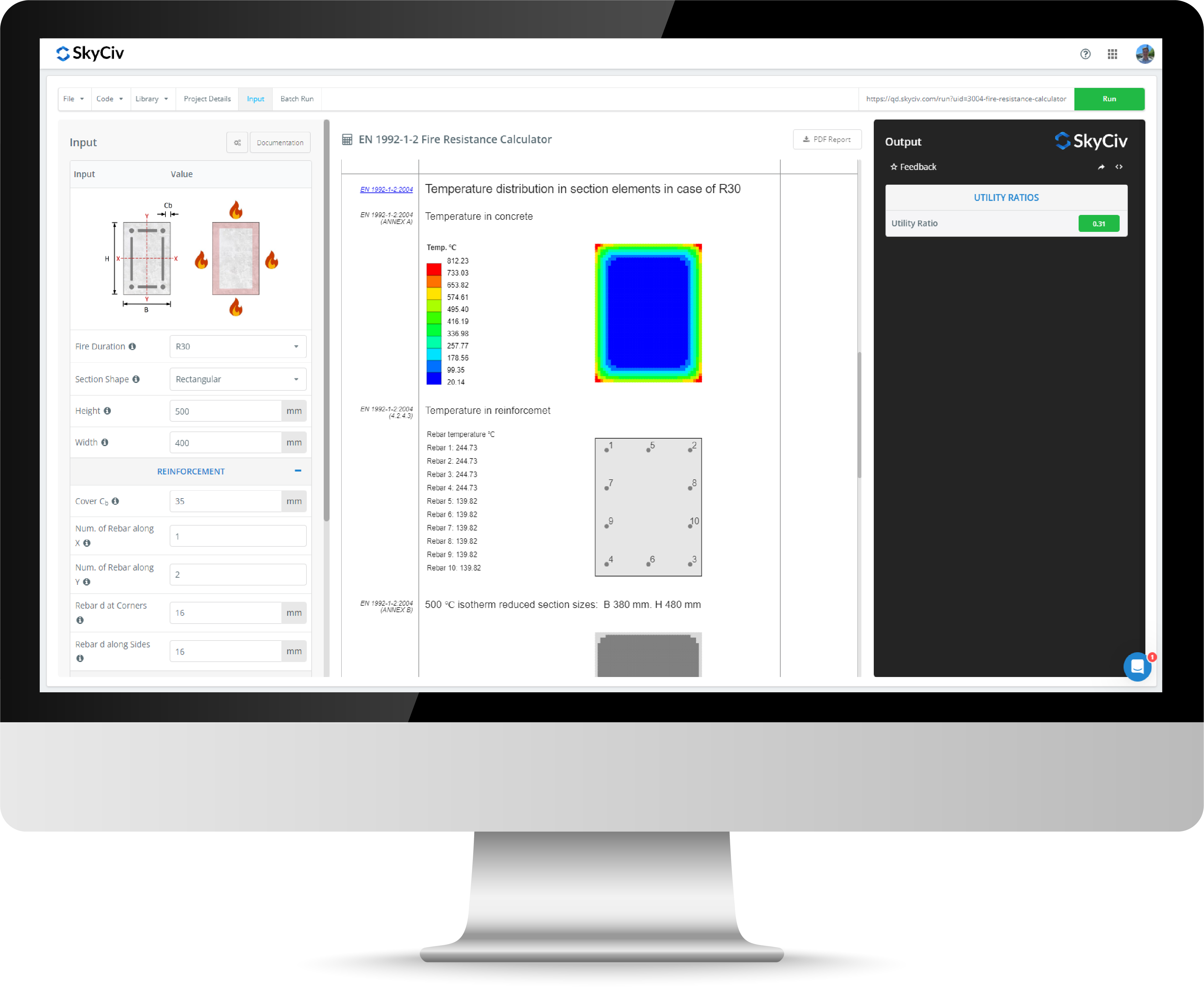Υπολογιστής Modulus του Young
Ο υπολογιστής συντελεστή Skyciv Young σας επιτρέπει να εκτιμήσετε το μέτρο του Young's Modulus (Επίσης γνωστό ως ελαστικό μέτρο ή μέτρο εφελκυσμού) με βάση τα δεδομένα καταπόνησης/καταπόνησης. Το μέτρο του Young's είναι μια ζωτική ιδιότητα για τους μηχανικούς που χρησιμοποιείται για τον προσδιορισμό της ακαμψίας ή της ακαμψίας ενός υλικού. Ο υπολογιστής περιέχει δύο τρόπους για τον υπολογισμό του συντελεστή Young's. Η πρώτη λειτουργία υπολογίζει τις τιμές τάσης και καταπόνησης από τη δύναμη, περιοχή, και τις αρχικές και τελικές ιδιότητες μήκους. Η δεύτερη λειτουργία εκτιμά το μέτρο του Young χρησιμοποιώντας γραμμική παλινδρόμηση από καμπύλη καταπόνησης-καταπόνησης. Για να ξεκινήσετε και να μάθετε πώς να υπολογίσετε το συντελεστή Young, εισαγάγετε τις ιδιότητες σας παρακάτω και κάντε κλικ στο κουμπί Εκτέλεση.
Σχετικά με αυτόν τον αριθμομηχανή μέματος νέων
Τι είναι το μέτρο του Young?
Το μέτρο του Young, συνήθως αναφέρεται ως συντελεστή ελαστικού ή εφελκυσμού, είναι μια κρίσιμη ιδιότητα υλικού που χρησιμοποιείται για τον χαρακτηρισμό της ακαμψίας ή της ακαμψίας ενός υλικού. Αντιπροσωπεύει την αναλογία μεταξύ στρες και καταπόνησης μέσα σε ένα υλικό που βιώνει είτε εφελκυστικές είτε συμπιεστικές δυνάμεις.
Γιατί το συντελεστή του Young είναι σημαντικό?
Η τιμή του μέσου Young's Modulus είναι μια ζωτική ιδιοκτησία υλικού που μετρά την δυσκαμψία και την ικανότητα του υλικού να αντιστέκεται στην παραμόρφωση κάτω από εφελκυστικές ή συμπιεστικές δυνάμεις. Αυτή η μέτρηση μπορεί να χρησιμοποιηθεί για να προβλέψει πώς συμπεριφέρονται τα υλικά κατά τα εφαρμοσμένα φορτία και να κάνουν βελτιστοποιημένες επιλογές σε υλικό για επιθυμητές εφαρμογές.
Πώς υπολογίζεται το συντελεστή Young's?
Δύο ξεχωριστές μέθοδοι που μπορούν να χρησιμοποιηθούν για τον υπολογισμό του συντελεστή Young's περιλαμβάνουν:
- Στρες / Τραχύτητα
- Καμπύλη στρες-καταπόνησης
Το άγχος / Τα δεδομένα καταπόνησης καθορίζονται από παράγοντες που περιλαμβάνουν δύναμη (φά) και περιοχή (ΕΝΑ) για άγχος (σ) και τελικό μήκος (LF) και αρχικό μήκος (Στο) για πίεση (ϵ). Ο τύπος για τον υπολογισμό του στρες και της πίεσης χρησιμοποιώντας τα δεδομένα έχει ως εξής:

Μόλις το άγχος / Τα δεδομένα καταπόνησης έχουν χρησιμοποιηθεί για τον υπολογισμό του στρες (σ) και τεντώ (ϵ) αξίες, Μπορούν να χρησιμοποιηθούν για τον υπολογισμό του συντελεστή Young's (μι) στον ακόλουθο τύπο:
Πώς να υπολογίσετε το συντελεστή Young από μια καμπύλη καταπόνησης-καταπόνησης?
Χρησιμοποιώντας τουλάχιστον τρεις συντεταγμένες τάσης-καταπόνησης, Αυτά τα σημεία μπορούν να γραφτούν στο διάγραμμα στρες-καταπόνησης, και μια γραμμή γραμμικής παλινδρόμησης μπορεί να σχηματιστεί. Αυτή η επιλογή είναι διαθέσιμη στον αριθμομηχανή του Young's Modulus παραπάνω. Από αυτήν τη γραμμή γραμμικής παλινδρόμησης, Η κλίση μπορεί να προσδιοριστεί, που αντιπροσωπεύει επίσης το μέτρο του Young's (μι) αξία.

Συχνές ερωτήσεις για τον αριθμομηχανή του Young's Modulus
Ποιες επιλογές για υπολογισμό είναι διαθέσιμες στον αριθμομηχανή του Young's Modulus?
Ο υπολογιστής μέτρησης Young's Modulus σάς επιτρέπει να υπολογίσετε το μέτρο του Young μέσω είτε δεδομένων τάσης και καταπόνησης είτε με εναλλακτικά υπολογισμό αυτής της ιδιότητας από καμπύλη καταπόνησης-καταπόνησης.
Τι σημαίνει ένα μέτρο υψηλού νέου?
Η τιμή του μέσου υψηλού Young υποδεικνύει ότι το υλικό είναι άκαμπτο και άκαμπτο, Αυτό σημαίνει ότι είναι λιγότερο ελαστικό και πιο ανθεκτικό στην παραμόρφωση κάτω από ένα εφαρμοζόμενο φορτίο. Εναλλακτικά, Ένας συντελεστής χαμηλού Young υποδεικνύει ότι ένα υλικό θα παραμορφωθεί εύκολα κάτω από μια εφαρμοζόμενη δύναμη και έχει χαμηλότερη ακαμψία.
Ο συντελεστής του Young αλλάζει με θερμοκρασία?
Στις περισσότερες περιπτώσεις, Καθώς η θερμοκρασία αυξάνει το συντελεστή του Young τείνει να μειώνεται ανάλογα με τις θερμικές ιδιότητες του υλικού. Σε μερικές σπάνιες περιπτώσεις, Ορισμένα υλικά ενδέχεται να παρουσιάσουν αύξηση του μέσου Young, καθώς αυξάνεται η θερμοκρασία.



